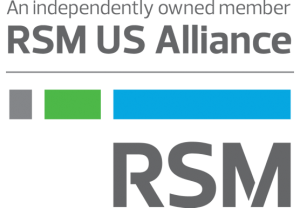Insights
We are proud to be named a West Coast Regional Leader for 2024


9 frequently asked questions about phantom stock plans
ARTICLE | April 05, 2022
Authored by RSM US LLP
This article was originally published on Oct. 12, 2020 and has been updated
Phantom stock plans can be a valuable method for companies that seek to tie incentive compensation to increases or decreases in company value without awarding actual shares of company stock. Here are answers to nine frequently asked questions about phantom stock plans and what they could mean for your company.
1. What is a phantom stock plan?
A phantom stock plan is a deferred compensation plan that awards the employee a unit measured by the value of a share of a company’s common stock, or, in the case of a limited liability company, by the value of an LLC unit.
However, unlike actual stock, the award does not confer equity ownership in the company. In other words, no actual stock is ever awarded to the employee under a phantom stock plan. Instead, the employee is granted a number of phantom stock units, and the plan provides that each phantom stock unit is equal in value to one share of common stock.
2. Why might a company want to issue phantom equity instead of actual equity?
Phantom equity does not have some of the drawbacks associated with providing actual equity. Situations in which a company may not want to issue actual equity include:
- A foreign parent may wish to award phantom stock units to executive employees of a U.S. subsidiary to avoid the complications of selling stock on a foreign exchange.
- A U.S. parent may wish to incentivize executive employees of a subsidiary without awarding shares of parent stock to tie their incentive to the subsidiary level value rather than the parent level.
- Equity grants may give rise to voting rights or unforeseen minority rights under state law.
- Additional legal documents and agreements, such as a shareholder’s agreement, may have to be amended or drafted, increasing complexity and legal fees.
- A company may wish that former employees do not own company stock after they separate from service.
3. How does a phantom stock plan work?
A company can grant an employee a designated number of phantom stock units or a percentage interest in the company’s value pursuant to a prescribed valuation method; this can be done once or multiple times. The phantom stock plan should indicate the number of phantom stock units or the participation percentage interest to be granted to the employee.
For example, the company could grant the employee a 5% interest initially and increase the interest to 10% after the employee completes five years of service.
Whether granted up front or over a period of years, the phantom stock units may either be immediately vested or subject to any vesting schedule determined by the company. For example, vesting may be cliff or graded, time-based, or based on the achievement of specified financial performance goals.
In addition, special forfeiture provisions can be included in the phantom stock plan to eliminate the company’s obligation to make payments to an executive upon specified events (e.g., if the employee breaches non-compete restrictions in the plan or the employee’s employment is terminated for cause).
4. How is the value of a phantom stock unit determined?
The value of a phantom stock unit may be measured by the value of a full share of company stock, or it may be based just on the appreciation in value during a specified time frame. (If based only on the appreciation, this is commonly referred to as a stock appreciation right.) The value may be a specified value, determined by an express written formula or determined by a third-party appraisal.
The method used for valuation should take into account adjustments that the parties agree are appropriate. For example, a company could exclude gain or loss attributable to operations or sales of certain divisions of the company. Other adjustments that might be considered include subtractions for capital investments made by the shareholders during the course of the plan, additions for any dividends paid to shareholders during this period, and the amount of accrued deferred compensation attributable to the phantom stock units themselves.
It should be noted that the value of the phantom stock units fluctuates from year to year as the value of the company changes. For example, if the company has a bad year and the value of its stock decreases, the value of the phantom stock also decreases. Thus, regardless of any vesting schedule, there is no locked-in value inherent in the phantom stock.
In addition, companies should be aware that events outside the company’s control also affect its value if a third-party appraisal is used. For example, legislative increases or decreases in corporate tax rates may result in companies having more or less cash flow, accordingly (with all else being equal). Similarly, a major event like the coronavirus pandemic affects market values for many companies. Companies should consider the possibility of such unexpected fluctuations in value, regardless of whether it relies on a third-party valuation.
The phantom stock plan should specify what events should trigger, or give rise to, a valuation (i.e., what events should entitle the employee to receive benefits under the plan) and at what precise point the value of the phantom stock units should be determined.
Typically, the valuation will follow an event that triggers phantom stock unit payouts so that the amount of such payouts can be determined. Companies can choose what the triggers are—examples include a separation from service, a change in control, or a specified future date or fixed payment schedule. In most cases, a valuation is required upon the employee’s termination, death, or disability. In other cases, valuation may be required periodically, such as annually, or on a specific future date.
To the extent possible, any date specified for measuring the value at a triggering event should be based on practicalities consistent with the company’s business practices. For example, once a triggering event has been identified, the company should consider whether the value should be determined on the exact date of the triggering event; or whether it makes more sense to look forward or back to the nearest quarter or year-end, depending on what financial information may be needed to calculate value.
5. How does the executive receive value from the phantom stock?
The number of phantom stock units, vesting schedule, form of payment (i.e., lump sum or installments over a period of years), and triggering payment events are typically set forth in individual grant agreements. Actual payouts of the phantom stock units are usually deferred until a predetermined future date or until the employment relationship is terminated due to retirement, death, or disability.
The phantom stock plan must specify when the phantom stock unit payments should commence and at what point a valuation of the units is generally required, as described above. If payments are to be made in installments, the phantom stock unit plan or grant agreement should also specify whether interest will accrue on the unpaid installments.
When designing these provisions, the company should take into account possible phantom stock valuations and company cash flow. It should be noted that even if payments are made after the grantee terminates service, the nature of the payment is generally still treated as compensation for tax purposes and reported on Form W-2.
6. How is phantom stock treated for income tax purposes?
Phantom stock plans are deferred compensation plans and, as such, must be designed and documented to conform to the requirements of section 409A. For income tax purposes, if the plan is compliant with section 409A, the deferred compensation attributable to the phantom stock will not be subject to income taxation to the employee until it is actually paid to and received by, the employee.
At the time the payment becomes taxable, the company is entitled to a deduction in a corresponding amount (subject to general limitations under section 162 with respect to the amount being reasonable and not excessive). However, unlike actual stock for which the increase in value on a disposition may be eligible for favorable capital gains tax rates, phantom stock unit payouts are taxable to the employee at ordinary income tax rates.
To ensure these tax results occur, companies should ensure that the terms of the phantom stock plan are in compliance with section 409A prior to the plan becoming effective. A violation of the section 409A rules could cause immediate taxation, plus an additional 20% tax, as well as the assessment of penalties all prior to any actual receipt by the employee.
7. What are the payroll tax consequences of phantom stock?
For the Federal Insurance Contributions Act (FICA), deferred compensation is includible as wages in the later of either the year in which the related services are performed, or the year in which the deferred compensation becomes vested.
The vesting and forfeiture provisions contained in the phantom stock plan or individual grant agreement determine whether and when the executive’s rights are vested. As the phantom stock units become vested, the value of the phantom stock units is includible as wages subject to FICA taxes. This is the case even though the amounts are not subject to income tax until actually paid to the employee.
If the employee’s base pay (before adding in the phantom stock unit payment) exceeds the Social Security wage base, no additional Social Security tax would be assessed on the phantom stock payments. However, the company and the employee would each be subject to Medicare payroll tax since the Medicare tax is imposed on total wages, without any wage cap.
8. Can entities taxed as partnerships use phantom stock?
Although partnerships do not have common stock, as noted above, entities taxed as partnerships, including LLCs, can implement plans very similar to phantom stock plans. In the case of a partnership, however, the value of a phantom stock unit is tied to partnership equity value rather than common stock value. All other aspects of the plan would be the same. Because the phantom stock units are not actual equity in the partnership, such a plan should not raise any concerns over partners being considered employees.
9. What should a company consider when designing a phantom stock plan?
Because a phantom stock plan is a nonqualified deferred compensation plan, companies have a lot of flexibility in plan design as long as that flexibility is exercised before the plan becomes effective.
Companies should address the following when formulating aspects of the written plan:
- What are the objectives of the plan?
- What behavior or performance levels is the company trying to incentivize?
- Who will be allowed to participate? (Consider current and future positions)
- What percentage of the company’s value should be dedicated or reserved for this plan?
- Should participants receive the base value of the phantom stock units, or only participate in growth over and above the base value?
- Is the potential payment opportunity under the phantom stock plan in line with the company’s compensation and business objectives in three, five, 10, or 15 years given certain performance assumptions?
- How frequently will phantom stock units be granted (e.g., a single upfront grant or annual grants)?
- When will phantom stock units vest? If phantom stock units are awarded annually, will each new grant be subject to a fresh vesting schedule?
- How will the phantom stock units be valued (i.e., based on a formula or an appraisal)?
- How will the phantom stock units be valued in the event of a merger, consolidation, or a change in control of the company? How should a change in control be defined?
- Will special vesting rules apply in the case of death, disability, or attainment of specified normal retirement age?
- Will any funding mechanism be used to help the company meet “fund” its future obligations to pay the amount owed to recipients?
- Should forfeiture provisions apply if the employee enters into competition with the company or is terminated for cause? How broadly or narrowly should the plan define what qualifies as cause for termination?
- When should the value of the phantom stock units be paid out in cash (e.g., periodically every three to five years, upon termination of employment, only upon a future change in control, or, perhaps, other events)?
- Should the payment be made in a lump sum or in installments over a period of years? If payments should be made in installments, over how many years?
- During the installment payout period, should earnings be credited on the balance at a specified interest rate? If so, at what rate? Should the phantom stock units pending payment continue to participate in the growth in value of the company?
- Does the phantom stock plan comply with section 409A? The plan must be designed and documented to conform to section 409A. This may restrict some of the flexibility of the plan design.
Various equity compensation methods, including phantom stock units, can provide great incentive to the employees receiving them and the employer providing them by cultivating increased engagement that can boost company performance. The attributes of phantom stock units should be carefully considered to determine whether it is the right incentive plan to meet a company’s needs.
Let's Talk!
Call us at +1 213.873.1700, email us at solutions@vasquezcpa.com or fill out the form below and we'll contact you to discuss your specific situation.
This article was written by Anne Bushman and originally appeared on Apr 05, 2022.
2022 RSM US LLP. All rights reserved.
https://rsmus.com/insights/services/business-tax/9-frequently-asked-questions-about-phantom-stock-plans.html
The information contained herein is general in nature and based on authorities that are subject to change. RSM US LLP guarantees neither the accuracy nor completeness of any information and is not responsible for any errors or omissions, or for results obtained by others as a result of reliance upon such information. RSM US LLP assumes no obligation to inform the reader of any changes in tax laws or other factors that could affect information contained herein. This publication does not, and is not intended to, provide legal, tax or accounting advice, and readers should consult their tax advisors concerning the application of tax laws to their particular situations. This analysis is not tax advice and is not intended or written to be used, and cannot be used, for purposes of avoiding tax penalties that may be imposed on any taxpayer.
RSM US Alliance provides its members with access to resources of RSM US LLP. RSM US Alliance member firms are separate and independent businesses and legal entities that are responsible for their own acts and omissions, and each is separate and independent from RSM US LLP. RSM US LLP is the U.S. member firm of RSM International, a global network of independent audit, tax, and consulting firms. Members of RSM US Alliance have access to RSM International resources through RSM US LLP but are not member firms of RSM International. Visit rsmus.com/about us for more information regarding RSM US LLP and RSM International. The RSM logo is used under license by RSM US LLP. RSM US Alliance products and services are proprietary to RSM US LLP.

Vasquez & Company LLP is a proud member of the RSM US Alliance, a premier affiliation of independent accounting and consulting firms in the United States. RSM US Alliance provides our firm with access to resources of RSM US LLP, the leading provider of audit, tax and consulting services focused on the middle market. RSM US LLP is a licensed CPA firm and the U.S. member of RSM International, a global network of independent audit, tax and consulting firms with more than 43,000 people in over 120 countries.
Our membership in RSM US Alliance has elevated our capabilities in the marketplace, helping to differentiate our firm from the competition while allowing us to maintain our independence and entrepreneurial culture. We have access to a valuable peer network of like-sized firms as well as a broad range of tools, expertise and technical resources.
For more information on how Vasquez & Company LLP can assist you, please call +1 213.873.1700.
Subscribe to receive important updates from our Insights and Resources.